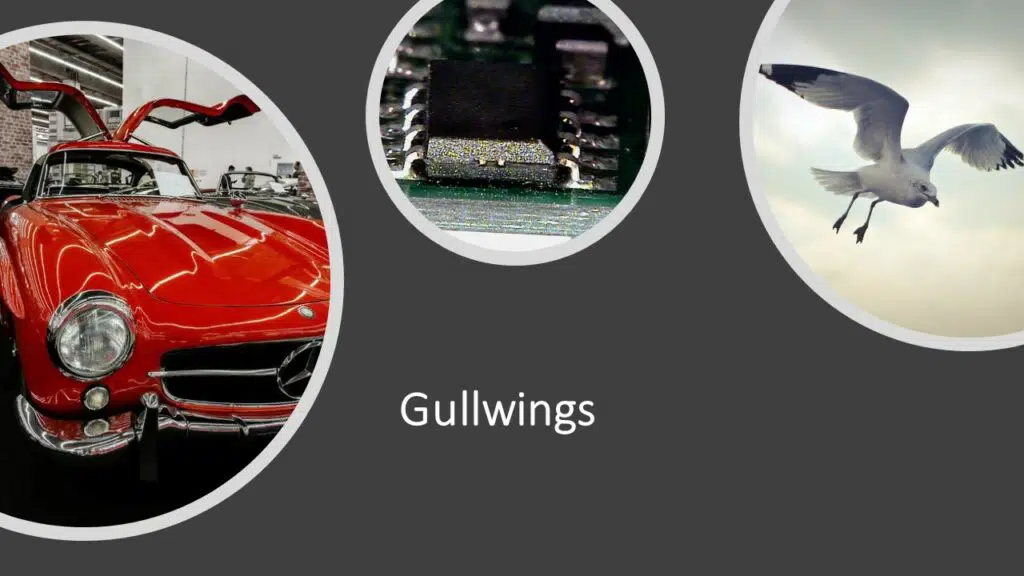 One of the Gull-Wing (*) style components are called QFP components. It is a component from the Gull-Wing family of SMD components, other Gull-Wing family styles are SOT, SOD and SOIC components. The specific property of the QFP or Quad Flat Pack is as the name says, that it has leads on all four sides of the component. The anatomy of these Gull-Wing leads follows the anatomy of a human leg. In the picture at 1 we see the toe, 2 is the foot, 3 the heel and finally 4 the knee. These areas are used as a reference for the acceptance criteria as we can find them in the IPC-A-610 and J-STD-001 documents. .
One of the Gull-Wing (*) style components are called QFP components. It is a component from the Gull-Wing family of SMD components, other Gull-Wing family styles are SOT, SOD and SOIC components. The specific property of the QFP or Quad Flat Pack is as the name says, that it has leads on all four sides of the component. The anatomy of these Gull-Wing leads follows the anatomy of a human leg. In the picture at 1 we see the toe, 2 is the foot, 3 the heel and finally 4 the knee. These areas are used as a reference for the acceptance criteria as we can find them in the IPC-A-610 and J-STD-001 documents. .
One important parameter, if not the most important when it comes down to inspecting the proper solder connection would be the solder fillet at the heel of the QFP. To achieve a reliable connection the solder fillet must reach a certain, specified minimum height, specifications which can be found in above mentioned documents. If we look at product reliability and longevity the heel area is to be considered as being the most stressed in relation to the difference in expansion rates between board and component, also called CTE mismatch. Therefore, a proper heel fillet is important and should be top of the list for the inspector.
 The problem however is that exactly this heel fillet is one of the most difficult areas to inspect and needs a view from an angle. Using common microscopes or loupes have their typical restrictions. And it takes a skilled inspector to use them to his advantage. The smaller the distance between the leads (the so-called pitch) the bigger the problem gets, and many inspectors become reluctant and trust that things will be ok. An attitude which might be dangerous, resulting in failure of products, possibly even with peoples lives at stake. Awareness of his responsibility is most important for the inspector and can only be gained by training and experience.
The problem however is that exactly this heel fillet is one of the most difficult areas to inspect and needs a view from an angle. Using common microscopes or loupes have their typical restrictions. And it takes a skilled inspector to use them to his advantage. The smaller the distance between the leads (the so-called pitch) the bigger the problem gets, and many inspectors become reluctant and trust that things will be ok. An attitude which might be dangerous, resulting in failure of products, possibly even with peoples lives at stake. Awareness of his responsibility is most important for the inspector and can only be gained by training and experience.
(*) A Gull-Wing style component is a component that has a certain shape of component leads. The name is based on the way the leads protrude from the side of the component resembling a seagull in flight, hence the name Gull-Wing. In the 50’s Mercedes introduced a car that with the doors opened resembled a seagull in flight as well, this car was also nicknamed Gull-Wing.







